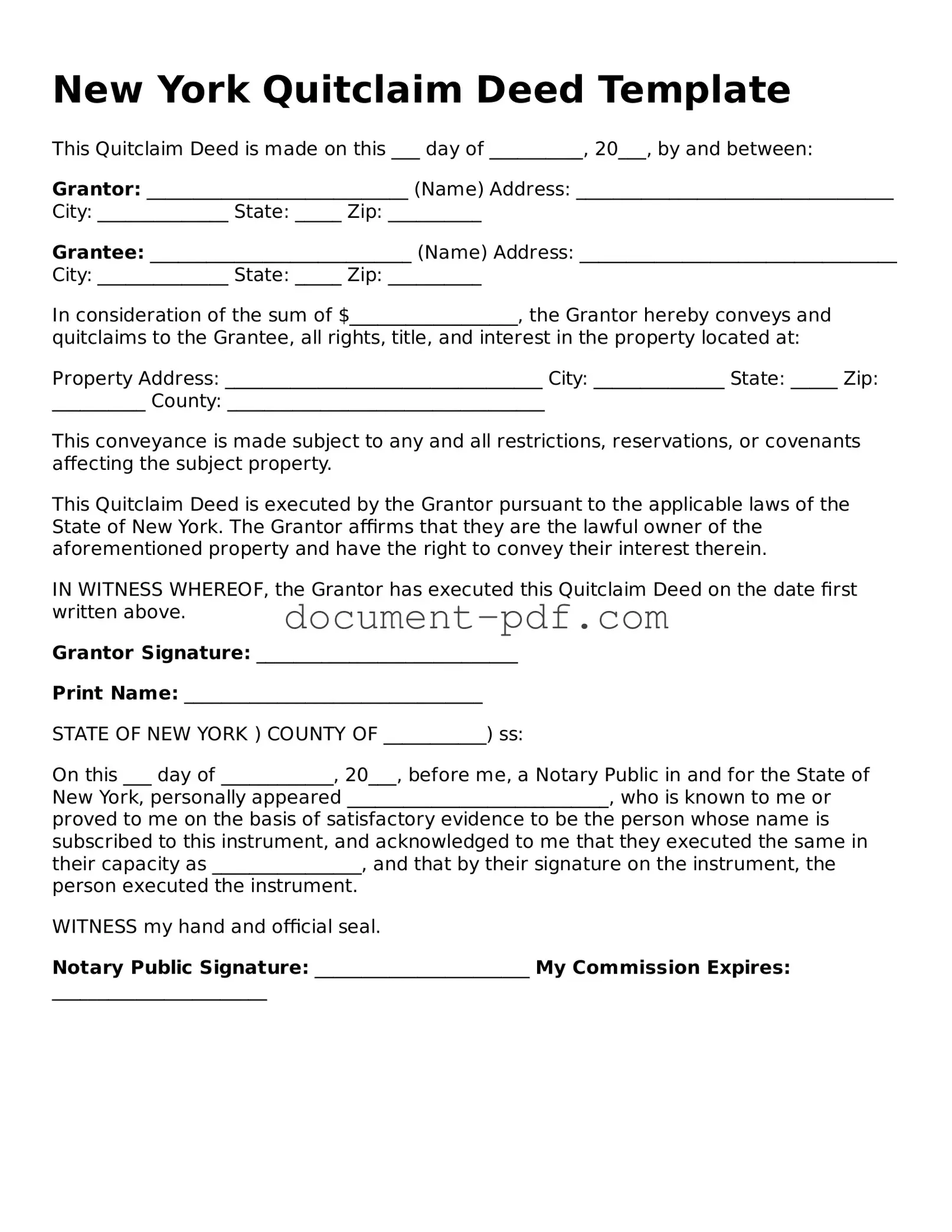New York Quitclaim Deed Template
This Quitclaim Deed is made on this ___ day of __________, 20___, by and between:
Grantor: ____________________________ (Name)
Address: __________________________________
City: ______________ State: _____ Zip: __________
Grantee: ____________________________ (Name)
Address: __________________________________
City: ______________ State: _____ Zip: __________
In consideration of the sum of $__________________, the Grantor hereby conveys and quitclaims to the Grantee, all rights, title, and interest in the property located at:
Property Address: __________________________________
City: ______________ State: _____ Zip: __________
County: __________________________________
This conveyance is made subject to any and all restrictions, reservations, or covenants affecting the subject property.
This Quitclaim Deed is executed by the Grantor pursuant to the applicable laws of the State of New York. The Grantor affirms that they are the lawful owner of the aforementioned property and have the right to convey their interest therein.
IN WITNESS WHEREOF, the Grantor has executed this Quitclaim Deed on the date first written above.
Grantor Signature: ____________________________
Print Name: ________________________________
STATE OF NEW YORK )
COUNTY OF ___________) ss:
On this ___ day of ____________, 20___, before me, a Notary Public in and for the State of New York, personally appeared ____________________________, who is known to me or proved to me on the basis of satisfactory evidence to be the person whose name is subscribed to this instrument, and acknowledged to me that they executed the same in their capacity as ________________, and that by their signature on the instrument, the person executed the instrument.
WITNESS my hand and official seal.
Notary Public Signature: _______________________
My Commission Expires: _______________________
